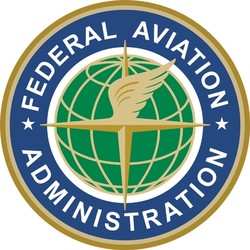Tue, Aug 26, 2014
Meetings Planned With FAA To Develop Advisory Circulars
HAI, along with the Association of Air Medical Services (AAMS) and the Air Medical Operators Association (AMOA), are continuing their work with the FAA to ensure that helicopter air ambulance operators have the information they need to comply with the helicopter safety rule issued earlier this year — often known as the HEMS rule.

The three associations are planning meetings with the agency in the coming weeks to develop advisory circulars and other guidance to help operators comply with the multi-year roll-out of the new rule.
Earlier this summer, as a result of pointed input from the three associations, the FAA issued a direct final rule and three technical corrections to the safety rule, which itself was issued in late February. The changes reflect industry’s input, and enhance safety.
The direct final rule modifies 14 CFR 135.611, a new section that was added as part of the helicopter safety rule, to allow helicopter air ambulance (HAA) pilots to “assess the weather at a departure point where current weather observations are not available and to depart if the pilot's observed ceiling and visibility is greater than certain weather minimums. This change to the current regulation will permit helicopter air ambulance flights to enter the National Airspace System under instrument flight rules (IFR) when visibilities and ceilings are below visual flight rules (VFR) based on pilot weather observations, thus increasing the safety of the flight.”
Had the FAA not taken this action, pilots would have been unable to depart IFR from landing sites without weather reporting — which would likely include most of the incident sites they would be departing from — until VFR conditions existed. It allows HAA pilots operating in low visibility to take full advantage of air traffic separation services.
In addition, the FAA made technical corrections the sections 91.155, 135.609, and 135.621.
- The change to 91.155 removes duplicative text and clarifies a table included in the section, but does not change the intent of the Final Rule.
- The change to 135.609 clarifies that weather minimums outlined in the part only apply to VFR operations.
- The change to 135.621 eases the burden for operators with regard to required briefings for medical non-flight personnel.
HAI, AAMS, and AMOA continue to have regular contact with the FAA as the agency develops the guidance necessary for HAA operators to comply with the new rules and enhance safe air ambulance operations.
More News
Aero Linx: International Federation of Airworthiness (IFA) We aim to be the most internationally respected independent authority on the subject of Airworthiness. IFA uniquely combi>[...]
Ultrahigh Frequency (UHF) The frequency band between 300 and 3,000 MHz. The bank of radio frequencies used for military air/ground voice communications. In some instances this may >[...]
A Few Questions AND Answers To Help You Get MORE Out of ANN! 1) I forgot my password. How do I find it? 1) Easy... click here and give us your e-mail address--we'll send it to you >[...]
From 2019 (YouTube Edition): Learning To Paint Without Getting Any On Your Hands PPG's Aerospace Coatings Academy is a tool designed to teach everything one needs to know about all>[...]
Also: Sustainable Aircraft Test Put Aside, More Falcon 9 Ops, Wyoming ANG Rescue, Oreo Cookie Into Orbit Joby Aviation has reason to celebrate, recently completing its first full t>[...]
 ANN's Daily Aero-Linx (05.06.25)
ANN's Daily Aero-Linx (05.06.25) ANN's Daily Aero-Term (05.06.25): Ultrahigh Frequency (UHF)
ANN's Daily Aero-Term (05.06.25): Ultrahigh Frequency (UHF) ANN FAQ: Q&A 101
ANN FAQ: Q&A 101 Classic Aero-TV: Virtual Reality Painting--PPG Leverages Technology for Training
Classic Aero-TV: Virtual Reality Painting--PPG Leverages Technology for Training Airborne 05.02.25: Joby Crewed Milestone, Diamond Club, Canadian Pilot Insurance
Airborne 05.02.25: Joby Crewed Milestone, Diamond Club, Canadian Pilot Insurance



